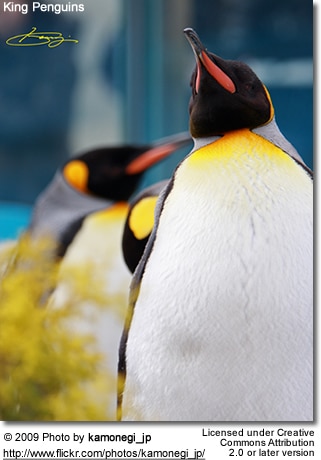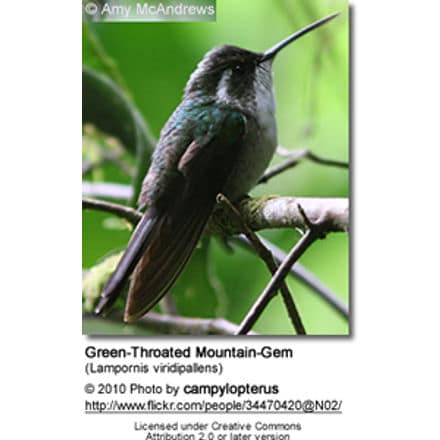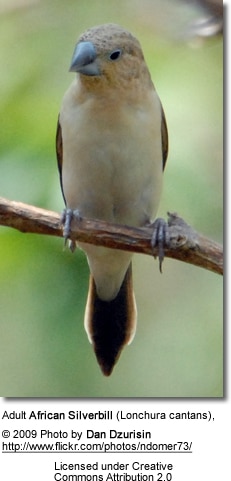Andean Flicker
Known as Pitío del norte, its Chilean name in South America, the Andean Flickers (Colaptes rupicola) is a secretive bird; thus very little is known about its habits, particularly in the areas of breeding and feeding.
Its global population numbers are unknown, but it is considered fairly common in its territories. The population is thought to be stable, and there is no evidence of significant declines or threats. Thus, it has been evaluated as “Least Concern.”
Distribution / Habitat
The Andean Flicker is a South American species of woodpecker. It is found in Polylepis grasslands, shrublands, and woodlands at altitudes of 2,000–5,000 meters (6,600–16,000 ft) in the Andes. (Polylepis is a genus of tree species found in mid-to high elevations in the tropical Andes.)
It can be found from southern Ecuador, through Peru, and into northern Chile and northwestern Argentina. It has also been observed in adjacent areas of Bolivia.
The Campo Flicker, Ground Woodpecker, and Andean Flicker are the only largely terrestrial woodpeckers. Colonies are also extant in the Lauca National Park in Chile.
Its territory falls mainly on puna grasslands of the high Andes.
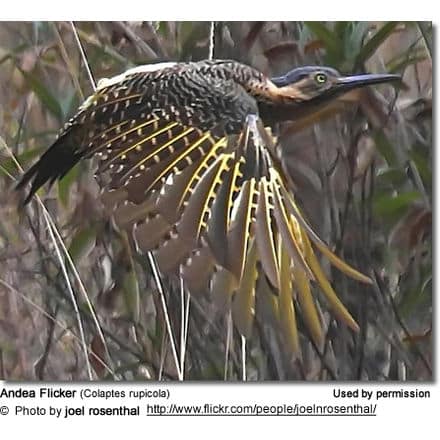
Subspecies and Ranges:
- Andean Flicker (Colaptes rupicola rupicola – Orbigny, 1840) – Nominate Form
- Range: Western, central and southern Bolivia, the Tarapacá region in northern Chile, and the Jujuy province south to the Catamarca northwestern Argentina.
- Andean Flicker (Colaptes rupicola cinereicapillus – Reichenbach, 1854)
- Range: Southeastern Loja region in extreme southern Ecuador and (SE Loja) and the Piura region in northern Peru.
- Andean Flicker (Colaptes rupicola puna – Cabanis, 1883)
- Range: Central and southern Peru
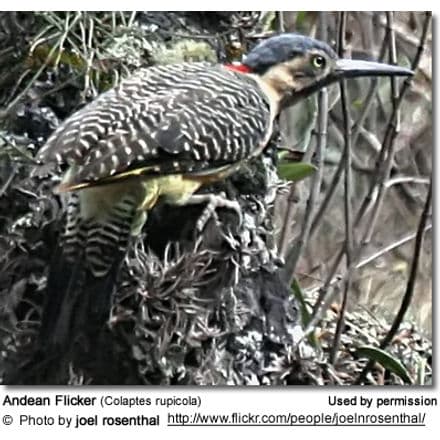
Description
This is a large species, although the female is smaller than the male. Although both have long bills, the male’s is longer.
The male has a red malar stripe and a small patch of red on the nape.
The female lacks both the red patch and the malar stripe. While the upperparts are dark brown with white bars, the underparts are a light grey and the breast is speckled. The crown is dark grey.
Diet / Feeding
The Andean Flickers feed on various insects, such as ants, and spiders.
Breeding / Nesting
Andean flickers are a gregarious species within their territories, and they nest in colonies. They build their nest burrows in close proximity to each other; often there are often as many as a dozen burrows in the colony. They require holes in cliffs or road cuttings in which to build their nest burrows.
Races are known to interbreed in Peru.
Calls / Vocalizations / Sounds
https://www.xeno-canto.org/embed.php?XC=95230&simple=1
Alternate (Global) Names
Chinese: ?????? … Czech: Datel skalní / velehorský … Danish: Andesguldspætte … Dutch: Andesgrondspecht … Estonian: Andi-täpikrähn, inka rähn … Finnish: Andienkultatikka … French: Pic des rochers … German: Anden Specht … Italian: Picchio delle Ande … Japanese: Andesuarechigera … Norwegian: Spydmarkspett … Polish: Dzieciol andyjski … Russian: ??????? ?????????? / ????????? ????? … Slovak: Vlikác skalný … Spanish: Carpintero Andino / de las piedras, Pitío del Norte … Swedish: Andinsk spett
Member of the Picidae Family: Woodpeckers … Sapsuckers … Flickers
Species account by Jeannine Miesle

